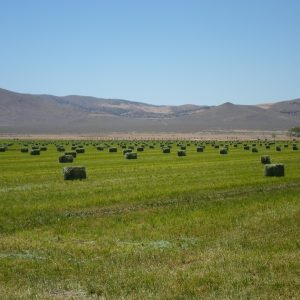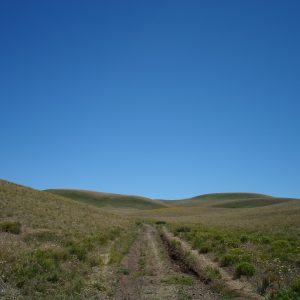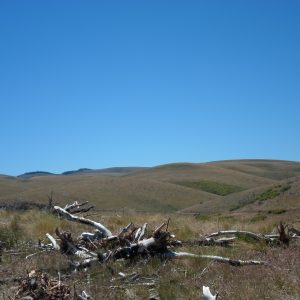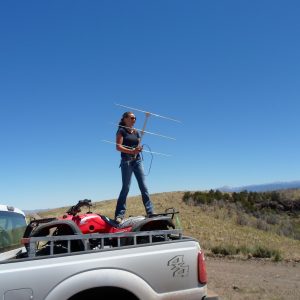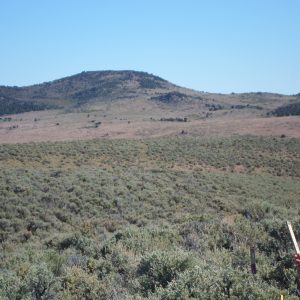One aspect of my internship that I’ve grown to appreciate most is exploring areas where I might not have considered hiking on my free time. Frequently our work involves hiking not only off-trail, but up rugged, steep terrain that doesn’t always look particularly appealing from the bottom.
A few weeks ago, another intern and I surveyed the area around Table Rock for a listed species of Cymopteris. This plant prefers the jagged and rough habitat of basalt rocks. After bushwhacking through sage brush to the base of a steep basaltic cliff, similar to much of what encircles the northern and eastern sides of Table Rock, we found the edge of a previous survey site. Looking up, we could see a few plants growing out of the cliff face towering over us, and so began our ascent to count and map plants. This population ended up spreading out quite a bit over surrounding rocks and boulders, which meant that we were able to spend a couple of days climbing, carefully balancing, and peering over cliff sides to ensure an accurate count. Oftentimes, I found myself thinking of mountain goats or bighorn sheep naturally maneuvering along the craggy rocks while I awkwardly edged along a boulder.
More recent assignments have brought us to spaces further east that very few people drive to, let alone hike around. Cows and antelope seem to be the dominate residents. In surveying for a few different listed species, we have climbed steep pumice hills and edged along the incline as we count plants. Slippery silt and loose rocks can make hiking in these micro habitats difficult, but we are also able to see plants unique to these areas that I would not have seen from afar. Because of the long drive to some of these locations, we were also able to camp in the area for the week. We watched a gorgeous sunset while cooking dinner on the summer solstice.
Spending time in places that people don’t go to a lot, and that I probably wouldn’t pick as my first choice for a hike, makes those places seem more adventurous and special.









